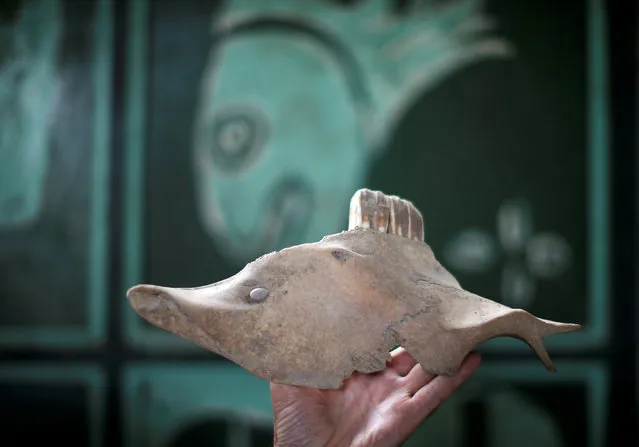
Stone collector Luigi Lineri, 79, holds a horse jaw bone that is shaped like a fish, discovered along Adige river in Zevio, near Verona, Italy, June 10, 2016. Luigi Lineri's home workshop is covered in stones – tens of thousands of them. They resemble animal heads, human faces and other forms, and the artist and poet believes may have been shaped by prehistoric humans. Lineri has built his vast collection over the last 50 years, making his finds along the Adige river, near Verona in northern Italy. “I haven't counted them and don't intend to do so but the quantity is significant”, Lineri said. “At first I thought that a few stones for each different shape would be enough and then I understood that in their thousands, they give a sense of community... For me the quantity is sacred: it takes a lot to build a cathedral”. Lineri says there has been no independent verification of whether the stones are indeed prehistoric sculpture and has not sought one, being more interested in them as “a work of art”. (Photo by Alessandro Bianchi/Reuters)
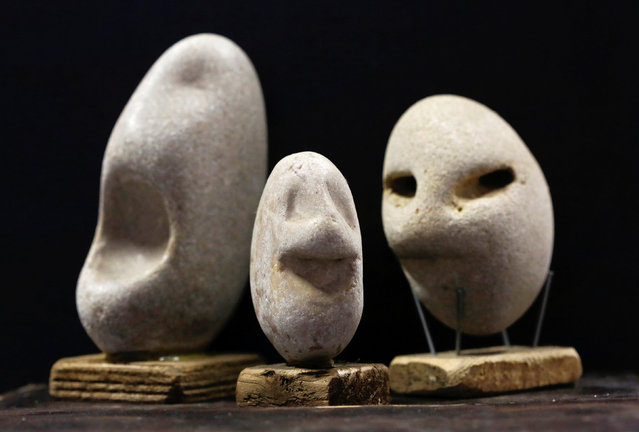
Stones collected and categorised by shape (faces) are seen at the home workshop of stone collector Luigi Lineri in Zevio, near Verona, Italy, June 10, 2016. (Photo by Alessandro Bianchi/Reuters)

Stones collected and categorised by shape (male genitalia) are seen at the home workshop of stone collector Luigi Lineri in Zevio, near Verona, Italy, June 10, 2016. (Photo by Alessandro Bianchi/Reuters)
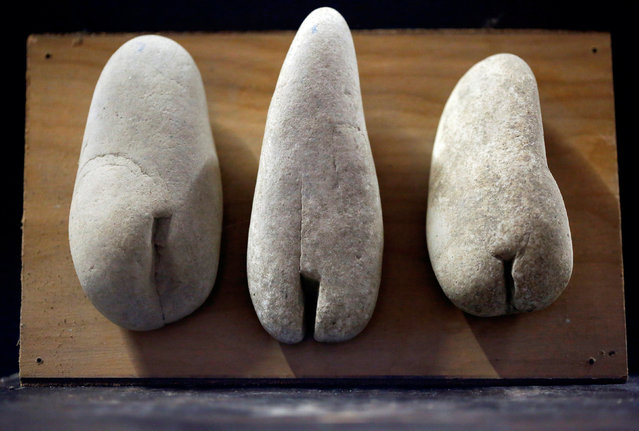
Stones collected and categorised by shape (female genitalia) are seen at the home workshop of Luigi Lineri in Zevio, near Verona, Italy, June 10, 2016. (Photo by Alessandro Bianchi/Reuters)
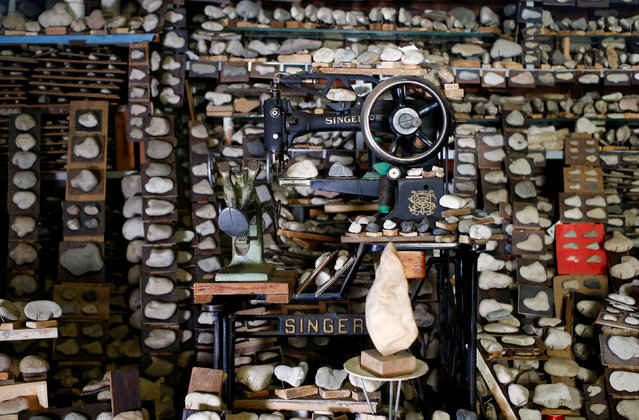
A shoemaking machine is surrounded by the stone collection of Luigi Lineri at his home workshop in Zevio, near Verona, Italy, June 10, 2016. (Photo by Alessandro Bianchi/Reuters)
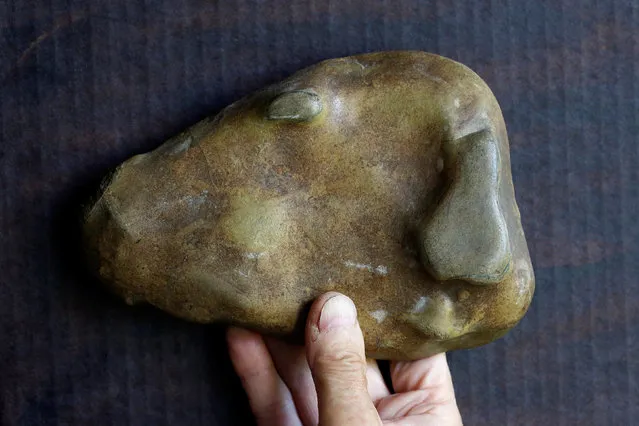
Stone collector Luigi Lineri, 79, holds a stone collected and categorised by shape (a dog's head) at his home workshop in Zevio, near Verona, Italy, June 10, 2016. (Photo by Alessandro Bianchi/Reuters)
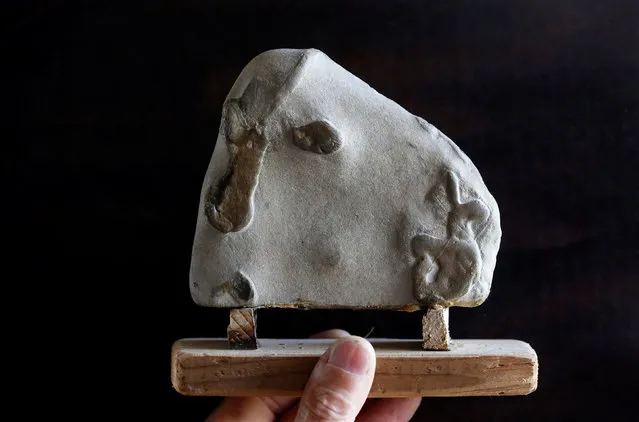
Stone collector Luigi Lineri, 79, holds a stone collected and categorised by shape (a sheep's head) at his home workshop in Zevio, near Verona, Italy, June 10, 2016. (Photo by Alessandro Bianchi/Reuters)
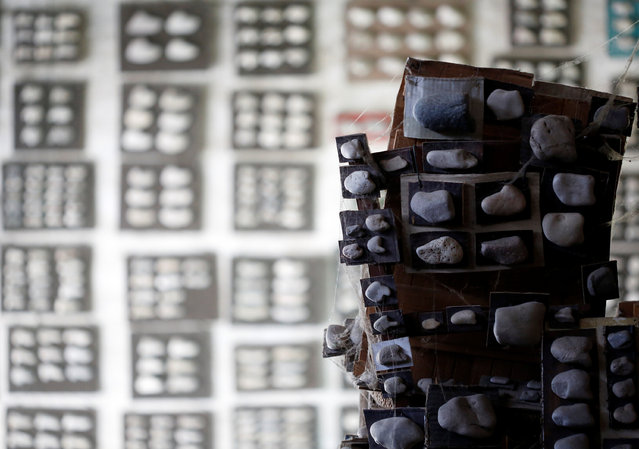
Stones collected by Luigi Lineri are seen at his home workshop in Zevio, near Verona, Italy, June 10, 2016. (Photo by Alessandro Bianchi/Reuters)
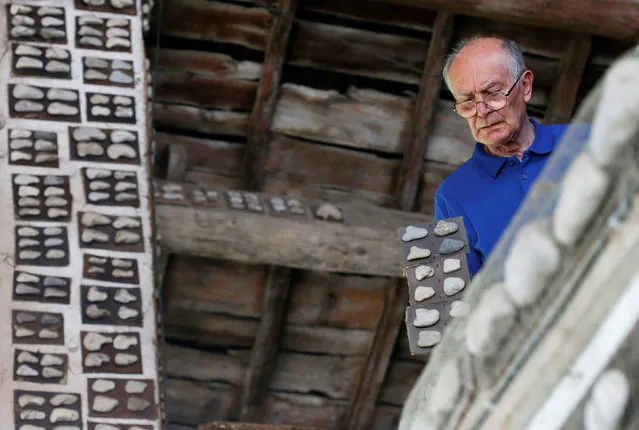
Stone collector Luigi Lineri, 79, looks at his collection of stones found along Adige river, at his home workshop in Zevio, near Verona, Italy, June 10, 2016. (Photo by Alessandro Bianchi/Reuters)
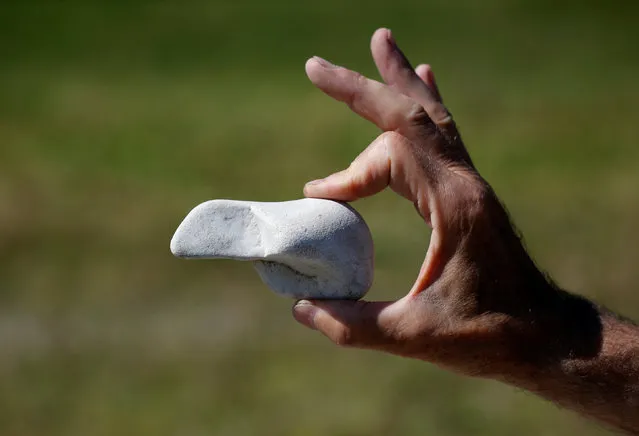
Stone collector Luigi Lineri, 79, shows a stone found along Adige river in Zevio, near Verona, Italy, June 10, 2016. (Photo by Alessandro Bianchi/Reuters)
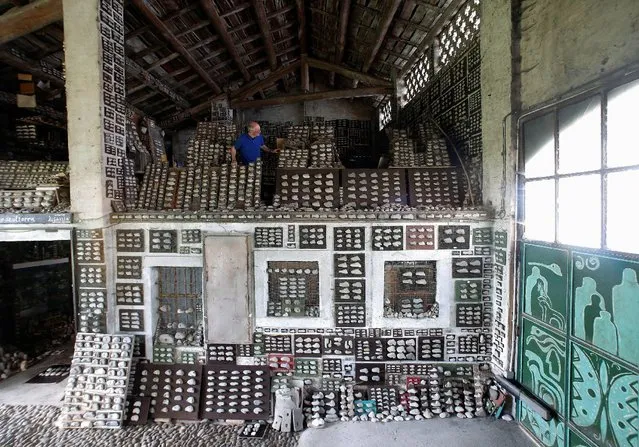
Stone collector Luigi Lineri, 79, walks through his stone collection found along Adige river, at his home workshop in Zevio, near Verona, Italy, June 10, 2016. (Photo by Alessandro Bianchi/Reuters)
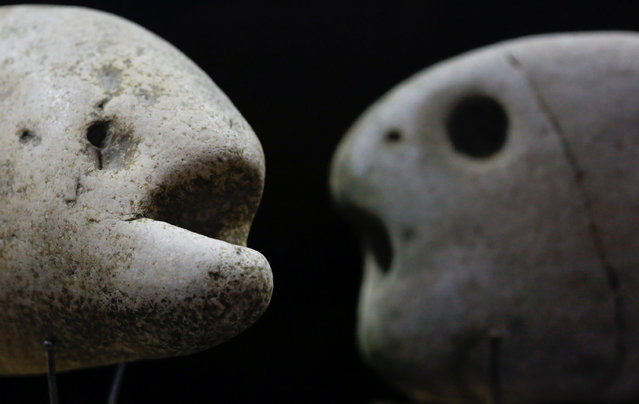
Stones collected and categorised by shape (fish) are seen at the home workshop of Luigi Lineri in Zevio, near Verona, Italy, June 10, 2016. (Photo by Alessandro Bianchi/Reuters)
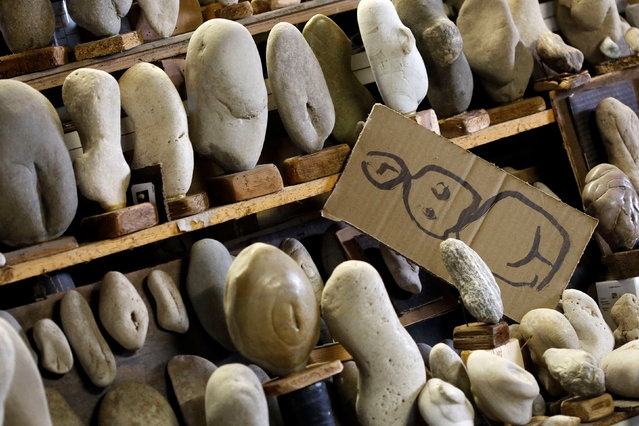
A part of the stone collection of Luigi Lineri, called “Grande Madre” (Great Mother), is seen at his home workshop in Zevio, near Verona, Italy, June 10, 2016. (Photo by Alessandro Bianchi/Reuters)
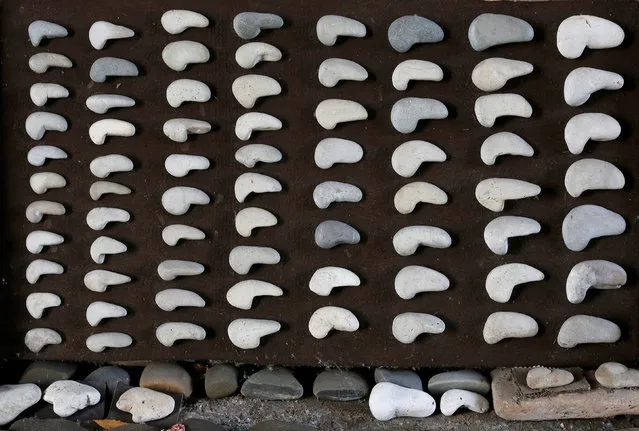
Stones collected by Luigi Lineri are seen at his home workshop in Zevio, near Verona, Italy, June 10, 2016. (Photo by Alessandro Bianchi/Reuters)
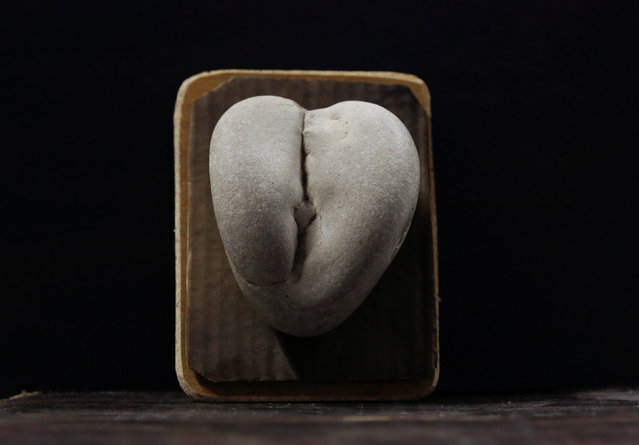
A stone collected and categorised by shape (female genitalia) is seen at the home workshop of Luigi Lineri in Zevio, near Verona, Italy, June 10, 2016. (Photo by Alessandro Bianchi/Reuters)
17 Aug 2016 11:23:00,
post received
0 comments
